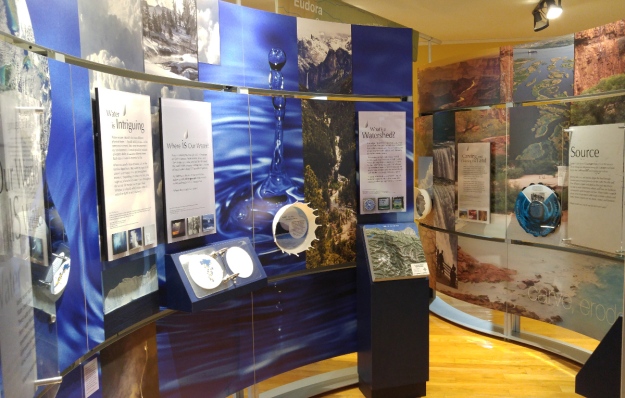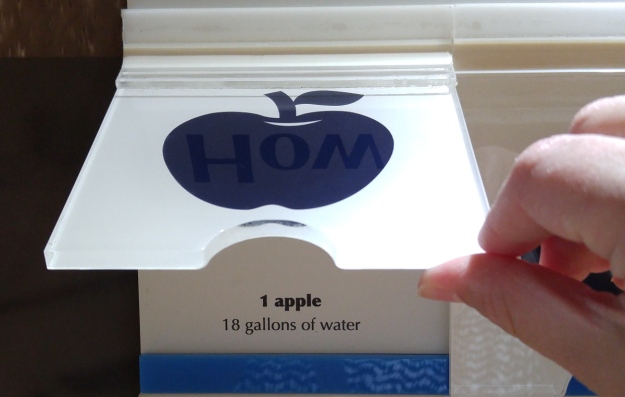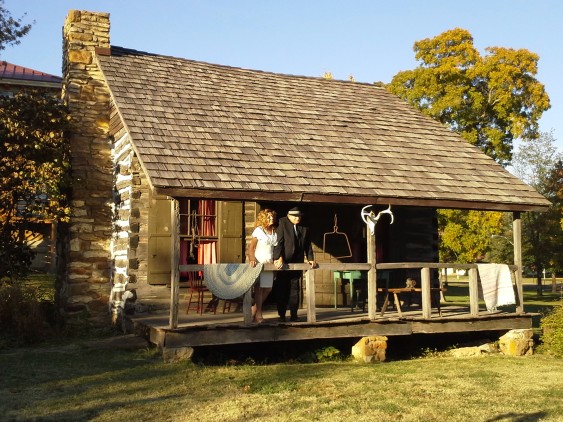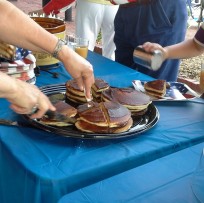None of us can live without water, and a new traveling Smithsonian Institution exhibit examines the role that water plays in our lives. Water/Ways is part of Museum on Main Street, a program that brings big topics to smaller towns all over the United States.

The Smithsonian Institution’s traveling Water/Ways exhibit is as beautiful as it is informative.
Water/Ways is currently traveling through Kansas, Alabama, Tennessee and Virginia. It’s a beautiful hands-on exhibit that looks at all of the ways we need, use, and interact with water. Water decides where we live, what we grow, and even our recreation and spiritual activities. Too much or too little water can be devastating.

Learn things you might not have known about water. Endorheic watersheds are made of water that drains to a basin instead of a river or the ocean.
In Kansas, we’re constantly thinking about water. We get too much rain. We don’t get enough. Our rivers are up. Our water supply is low. Our water mains break. Our reservoirs silt up. Zebra mussels threaten our water towers. We worry we’ll deplete our aquifers.
The rest of the world is having conversations about these things. too.

This display helps you understand how much water it takes to produce everyday things, like apples, blue jeans, and cars.
The Water/Ways exhibit looks at where we find water on earth and how human activity impacts our water resources. Learn how much water it takes to grow an apple, built a car, or produce a pair of blue jeans. Try your hand at developing good water policies that protect our water supply while supporting cities AND agriculture. [Hint: It’s super hard.] Discover the water challenges faced by people, plants, and animals around the globe, and how living things have adapted to them.

Try your hand at creating public policy that will both protect the water supply AND meet water demands.
It’s a small but powerful exhibit.
In addition to the traveling Water/Ways exhibit, the Kansas Humanities Council has also awarded grants to numerous sites around the state to tell their own water story. [Disclaimer: The Old Depot Museum, where I work, received one of these grants!] The local stories are amazing and demonstrate how our own state can have very diverse water experiences.
The Smithsonian exhibit is on display at the Eudora Community Museum through August 6. If you can’t make it to Eudora in time, you can catch the exhibit in other Kansas locations through 2018.
There are also three local stories being told during the summer of 2017:
“At the Mercy of the Kaw: Eudora’s Relationship with Water,” the story of Eudora’s relationship with the Kansas River (Eudora Community Museum, Eudora, Kansas)
“Crossings: Getting Over, Around, and Through Water in Franklin County,” the story of the love/hate relationship between Franklin County and the Marais des Cygnes River (Old Depot Museum, Ottawa, Kansas)
“Dam, That Took a Long Time,” the story of the construction of Wyandotte County Lake and Dam (Mr. and Mrs. F.L. Schlagle Library and Environmental Learning Center, Kansas City, Kansas)
Upcoming local stories look at floods, failed canals, desegregating swimming pools, and artesian wells.
This is a powerful traveling exhibit and worth seeking out before it leaves the state.






















